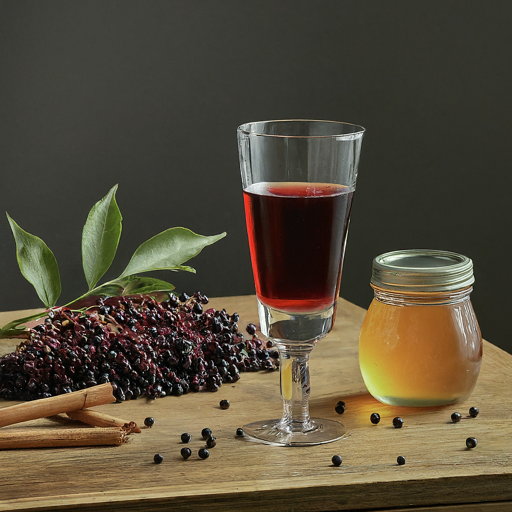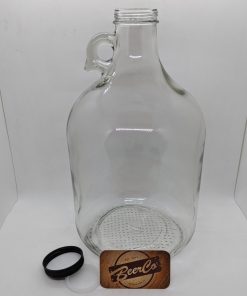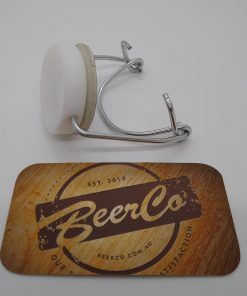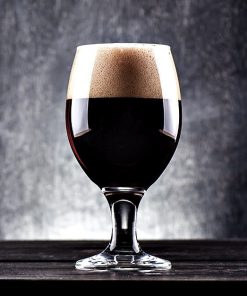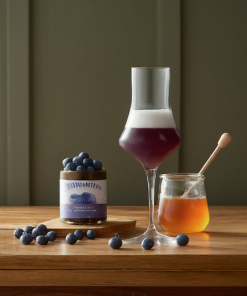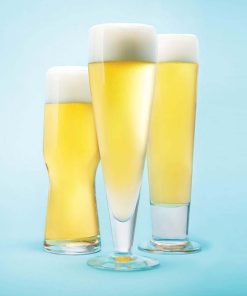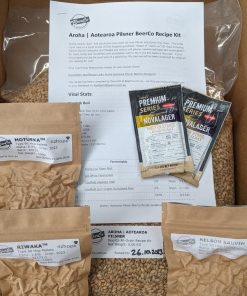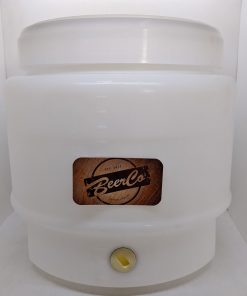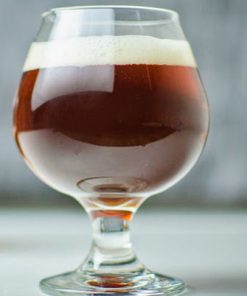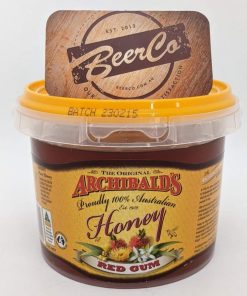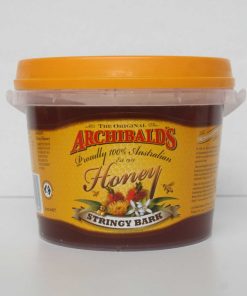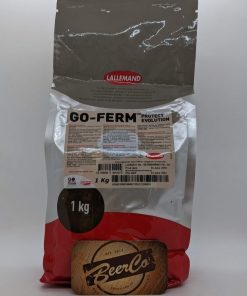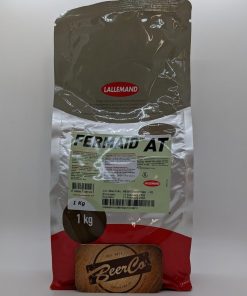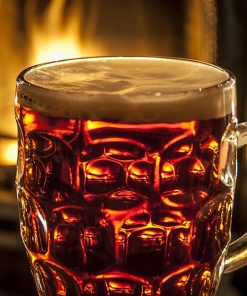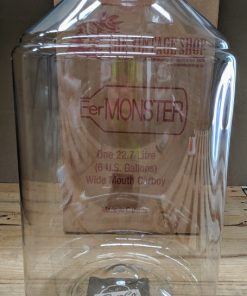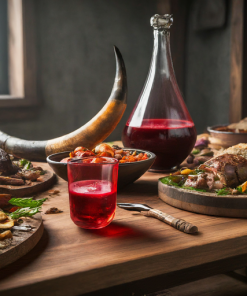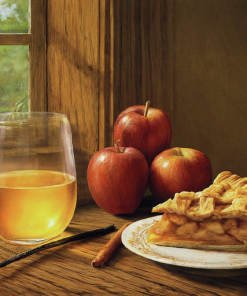Eir | Elderberry Morat | Mead Recipe Kit BeerCo.au
$ 69,95 $ 34,98
Embark on a journey with Eir, the daring Valkyrie who defies expectations. While her fellow warriors scour the battlefield, Eir selects the survivors and nurses them back to health. In ancient times, the art of healing belonged to women, and Eir was often called upon during rituals, symbolized by the pure white Eirflower. As a nod to her connection with healing and copper, we proudly present the Elderberry Morat Mead Recipe Kit under her name. But don’t just take our word for it – take a risk and concoct your own batch of this delicious mead to experience its revitalizing properties for yourself!
Eir | Elderberry Morat | Mead Recipe
written by Jimmy from BeerCo.au
Vital Stats:
- Batch Sizes: 5 Litres OR 10 Litres
- OG: 1.058
- FG: 1.000
- ABV: 8%
Recipe Kit Contents:
SINGLE BATCH (5 Litres):
- 2 Kg Archibald’s Honey | Floral
- 1 x M05 Mangrove Jack’s Mead Yeast 10g Sachet
- 1 x Mangrove Jack’s | Wine Yeast Nutrient
- 300g Elderberries
- 1 x Cinnamon Stick
DOUBLE BATCH (10 Litres):
- 3 Kg Archibald’s Honey | Floral
- 1 x M05 Mangrove Jack’s Mead Yeast 10g Sachet
- 1 x Mangrove Jack’s | Wine Yeast Nutrient
- 600g Elderberries
- 2 x Cinnamon Stick
Additional Ingredients and Equipment Required:
- Plastic Fermenter and Natural Tap
- 1 Gallon / 5 Litre Demijohn(s)
- 36mm – 45mm Bung | Bored
- S-Type Airlock Bubbler and Grommet for Airlock
- Hydrometer
- Digital Pocket Thermometer
- 250ml Glass Measuring Cylinder
- Easy Siphon
- 10mm Hose Tubing (Approx. 3m)
- Blue Bottler with Spring
- 1 Spoon for Stirring
- 500mL Glass Swing Top Bottles
Method:
- Rehydrate the dried elderberries in the fridge overnight by placing them into a bowl filled with 1.5 L of water.
- Grab the bowl with the now rehydrated elderberries and pour the contents into a pot. Bring to a boil before simmering over medium heat for 20 mins.*
- Fill your fermenter/ brew bucket with approx. 3.7 L of water before pouring in your elderberry infused water. Tip the entire contents of the pot into the fermenter – do not strain and remove the elderberries. Add in 1.12kg honey and stir until combined.
- Aerate the must and pitch ½ a packet of Mangrove Jack’s M05 Mead Yeast. Ferment between 15oC – 30oC.
- 24 hours after pitching the yeast open your fermenter and wet the floating elderberries by pushing them into the liquid using a sanitized spoon – this is to prevent mould. Then degas (gently stir) the mead. Now open the Mangrove Jack’s Wine Yeast Nutrient and distribute approx. ⅙ of the contents into the mead. Aerate for 1 – 2 mins.
- Repeat the previous step at 48 and 72 hours.
- Punch the fruit cap (wet the elderberries) once a day for the first 7 days of fermentation. Do not open the fermenter (unless taking gravity readings) after this point as you risk oxidization.
- Once your gravity reads ≤ 1.000 and at least 3 weeks have passed since pitching the yeast grab the cinnamon stick and chuck it into a 5 litre glass demijohn. Rack (syphon) your mead on top of it.
- Let the mead meld with the cinnamon for 1-2 weeks before racking off into another 5 litre glass demijohn.
- Leave your mead to mellow and develop its flavour for at least 2 months. Check the airlock every so often in case it needs to be refilled.
- Bulk age and/or bottle†.
*DO NOT skip this step. Elderberries are toxic if not cooked prior to metabolizing.
†Refer to the section on Stabilisation and Back Sweetening below.
NOTE:
– Everything that touches the honey and eventually mead at all stages throughout the process must be clean, rinsed and sanitized to avoid infection.
– If brewing a Double Batch times all measurements by two.
– The calculations given in the stabilisation and back sweetening guide are calculated for this particular mead at the stated ABV.
STABILISATION AND BACK SWEEENTING:
Eir is intended to be a sweet mead. The following is a brief outline on two different methods in order to achieve this.
METHOD 1:
- Confirm your mead has finished fermentation via a gravity reading of ≤ 1.000. Ideally, this will be done once your mead has started to clear.
- Crush one Campden Tablet (Potassium Metabisulfite) into a powder. Then using a scale that can accurately measure down to 0.01 decimal places weigh out 1.35g of Potassium Sorbate.
- Take a small sample of the mead and stir until both additives have completely dissolved.
- Pour the sample into an empty 5 litre demijohn and rack your mead on top of it.
- Allow between 12 – 24 hours to pass before weighing out 380g of honey.
- Pour the honey into the mead and gently stir until combined, taking care not to cause a whirlpool or aerate the mead. If after 5 or so minutes of slowly stirring there is still some undissolved honey don’t worry about it, this will sort itself out over the next couple of days.
- Take a gravity reading before replacing the airlock – It should be right round 1.022.
- Give your mead at least a week before confirming fermentation has not restarted. If the gravity matches what it did a week prior, you can move onto bottling.
WARNING: If you do not have all the established ingredients/ equipment in order to safely perform stabilisation via chemical additives DO NOT attempt to add additional honey into the demijohn – you will restart fermentation. Bottling while yeast are actively fermenting will cause bottles to explode, risking hospitalisation.
METHOD 2:
- Ideally, once your mead has cleared, bottle as per step 11.
- When you’re ready to drink some mead, go grab the leftover honey that wasn’t used during primary fermentation.
- Pour your mead into a glass (Serving Suggestion: 150ml).
- Spoon out about ½ tsp‡ of honey and stir into the mead.
- Consume the Nectar of the Gods!
‡Adjust the amount of honey according to taste.
| Size | 5 L, 10 L |
|---|
Fast shipping and professional packing
We offer a wide range of shipping options due to our long-running partnerships with UPS, FedEx and DHL. Our warehouse staff are highly trained and will package your items according to our precise and precise specifications. Before shipping, all goods are thoroughly inspected and securely secured. Every day we ship hundreds of packages to our customers from all over the world. This is a sign of our commitment to be the largest online retailer worldwide. The warehouses are located situated in Europe as much as they are in USA.
Note: Orders containing multiple items will have a different processing period for each item.
Before shipping the items, our staff will carry out an extensive inspection of the products you have ordered. The majority of orders are delivered within 48 hrs. The delivery time should be between 3-7 working days.
Returns
We don't manage the stock in our factory and warehouse. Actual stock levels may fluctuate at any moment. Be aware that it's possible that your order will be out of stock after you have placed the order.
Our policy is for 30 days. Unfortunately, if 30 days have passed from the date you purchased the product, we are unable to offer you a return or exchange.
The item must not be used, and it must be in the original packaging. It must also be in the original packaging.
Related products
Equipment
Equipment
Equipment
Equipment
Equipment
Brewing Aids
Brewing Aids
